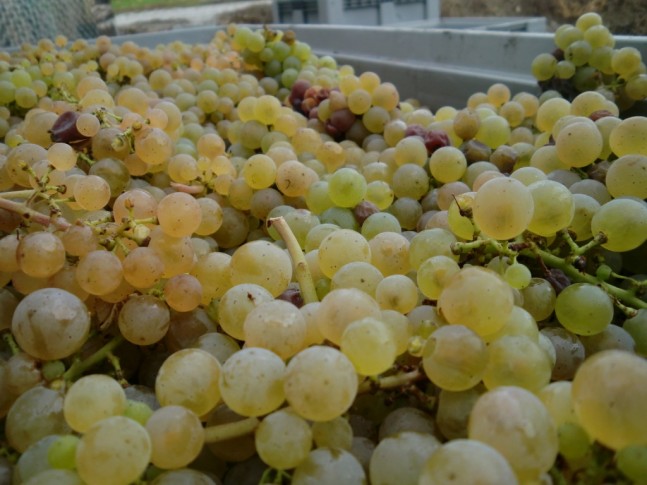Day 16: 11/10/2011 The Rain is gone!
Today is a beautiful day. I know I said that last week but after 5 days of rain, it was good to see the sun was up, the sky was blue and the chill was gone.
There was nothing much going on today except for 10 bins of Riesling from the kögl vineyard coming in this morning. We did an average sugar measurement on the grapes and it was an average of 19.5 KMW which is about 13% alcohol. The bins of grapes went straight to the press. More aeration was being done today.
We also spent some time re-bottling the 1969 WiedenGrünerVeltliner and 1968 Goldberg Grüner Veltliner & Müller-Thurgau blend. It gets really frustrating with the old bottles when the cork breaks while taking them out. I had to clean up the black, greasy mold that has seeped into the sides of the mouth of the bottle. Wine and grease don’t mix well together. I can now understand why some people insist on decanting old wines because time in the underground cellar does impart a stench to the wines.
It was really fascinating to taste the kögl Rieslings and get a better look at them. Having skipped breakfast, I spent a good amount of time eating the different coloured grapes. If without self-restrain, I would have continued chomping down a significant part of the 2011 kögl wines. I noticed that the grapes from there came in three different colours.
The first is purple which means that the grapes are affected by botrytis. Not all botrytis grapes taste bad. If they are quite desiccated, they have a sweet raisiny taste to them. If they are not desiccated, they are sour and foul to taste.

Yellow berries on left vs green on right and some purple
The second is green. The green grapes have high acid and taste sweet. To tell if the green grapes are ripe, I would put them against the sunlight. If the light is able to penetrate through the berries, it gives me a hint of their sweetness. The berries that can’t get any light penetration taste very acidic.
Lastly are the yellow-coloured berries. I was told that the berries are yellow because of sunburn. This is sometimes frowned upon by producers because sunburn can potentially produceperceptible amounts of TDN (1,1,6-trimethyl-1,2-dihydronaphthalene) in grapes, which imparts kerosene and overly-toasty characters to young Riesling wines.
Recalling my time spent in the vineyards, I remembered that the grapes that were mostly yellow tend to be on the outer rows of the terraced vineyards rather than the inner rows. The inner rows were more sheltered from the sun compared to the outer rows. Upon tasting the yellow berries, I noticed that they had more sweetness in there and more flavor.
I love Riesling that were yellow rather than green but it is not ideal to make wine from just yellow Riesling grapes. Riesling needs acid and the green ones have more acid than the yellow ones. I think that it is best to have some yellow, some green and some good purple ones in the pressing of the grapes. The concept of balance between sweetness, acidity and flavor ripeness begins in the material going into the wine and will be reflected when it finally goes into the bottle.
|
|
Tweet |






No comments to Sommelier Shalom Chin – Austria vintage blog – day 16 | Comments Feed
No comments yet
The comments are closed.